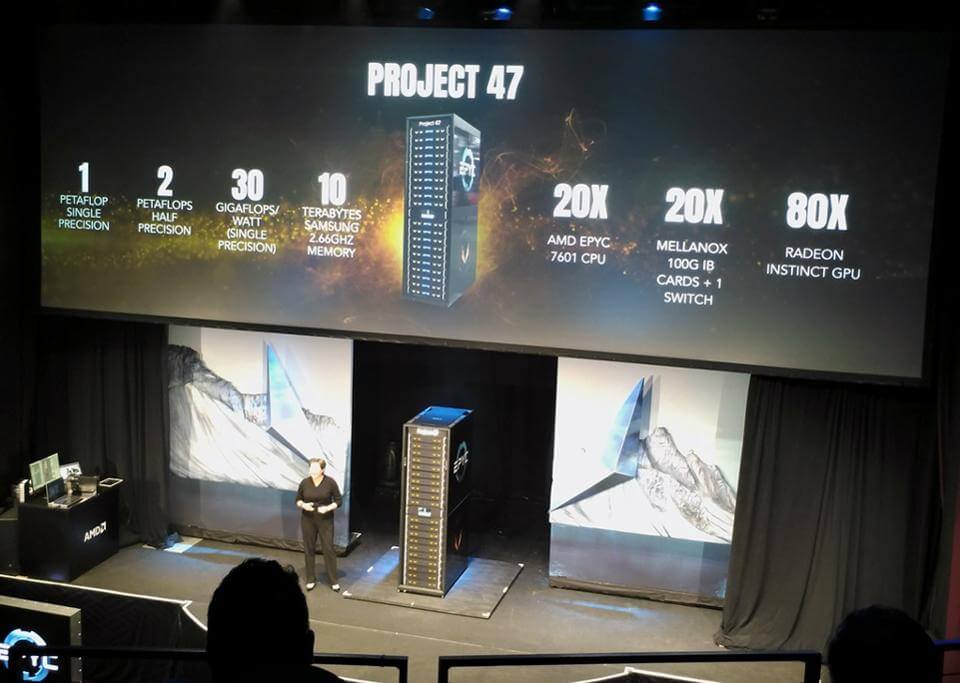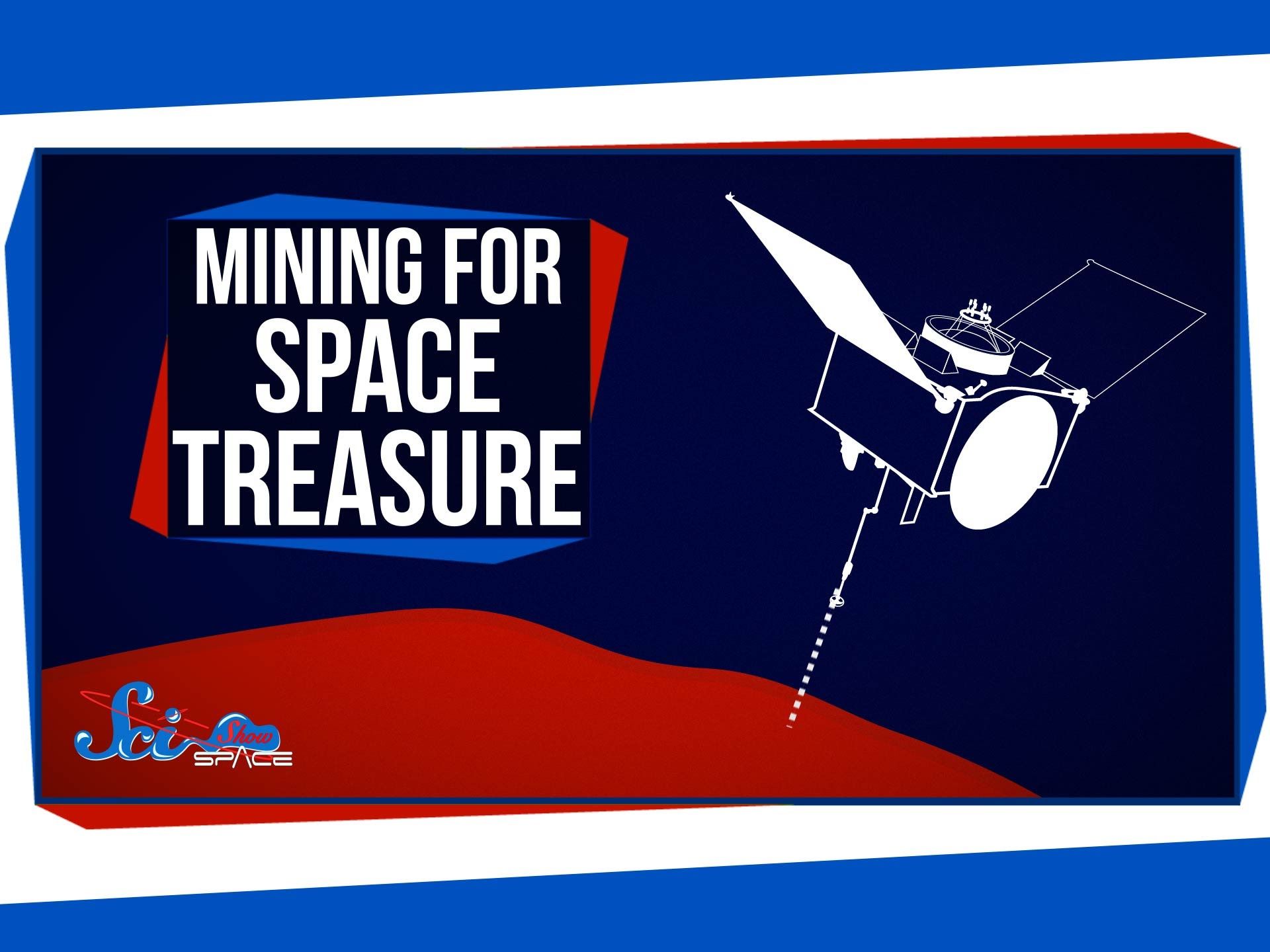Yesterday, AMD revealed the Project 47 supercomputer was powered by 20 AMD EPYC 7601 processors and 80 Radeon Instinct GPUs. It is a petaFLOP supercomputer in a rack. Other hardware included 10TB of Samsung memory and 20 Mellanox 100G cards (and 1 switch). Project 47 is capable of 1 PetaFLOP of single-precision compute performance or 2 PetaFLOPS of half-precision.
Project 47 is built around the Inventec P47. The P47 is a 2U parallel computing platform designed for graphics virtualization and machine intelligence applications. A single rack of Inventec P47 systems is all that was necessary to achieve 1 PetaFLOP, and it does so while producing 30 GigaFLOPS/Watt, which AMD claims is 25% more efficient than some other competing supercomputing platforms. A petaFLOP system uses 33,333 watts. A thousand of PetaFLOP racks would use 33.3 MW and have an exaFLOP.
Thanks to its 32-core / 64-thread EPYC processors and Radeon Vega GPUs, which feature 4,096 stream processors each, AMD also claims that Project 47 rack has more cores/threads, compute units, I/O lanes and memory channels in use simultaneously than in any other similarly configured system.









